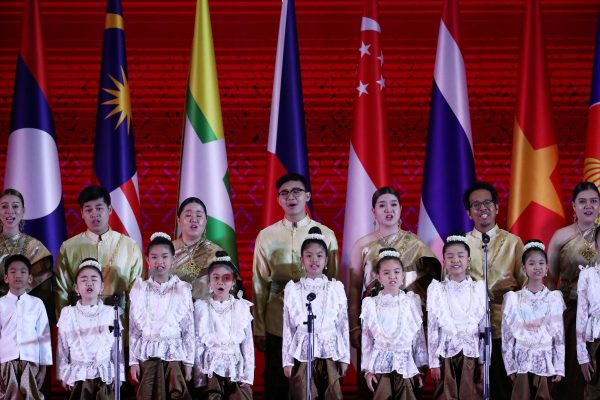The pressure has been intensified by the COVID-19 pandemic and its impact on big power tensions and the global economy.
ASEAN has played a central role as a fulcrum around which big power jostling in the region has been stabilised. ASEAN’s cooperation arrangements have served as an effective mechanism for engaging and managing big power interests in the region. But can ASEAN and its regional frameworks continue to remain resilient enough in dealings with the two big regional powers as they have increasingly begun to cast themselves as strategic competitors?
The rise of China as a world economic power has increased its confidence and influence in the region, including vis-a-vis ASEAN and ASEAN’s member states. Two areas in which China’s growing power directly impacts ASEAN members are on the territorial and navigation issues in the South China Sea and in responding to the large-scale financial assistance that China has offered through its Belt and Road Initiative. China’s growing power is matched with a geopolitical ambition that now encompasses a broader conception of its maritime security interests, including over large areas of the South China Sea that border on ASEAN member states.
Meanwhile, ASEAN confronts the problems that result from the radical changes in the foreign and international economic policies of the United States since Donald Trump assumed the US presidency. President Trump’s ‘America First’ policy and his administration’s rationalisation of trade protectionism in response to American job losses associated with offshoring has undermined commitment to the open multilateral trade regime. Trump’s attack on the WTO’s dispute settlement mechanism, his espousal of bilateralism and renegotiation of NAFTA in North America and KORUS with Korea, his withdrawal from the Trans-Pacific Partnership and his effectively launching all-out trade and technology war with China have rocked the foundations of the international economic system on which ASEAN relies. Mr Trump’s disrespect of its alliance relationships in the region piles on additional uncertainty in Asia about US reliability.
There are five major theatres in which these gathering economic and political forces affect ASEAN and its dealings with the major powers: in the South China Sea over territorial and freedom of navigation issues; over the Chinese Belt and Road Initiative; in the escalating trade and technology war between the United States and China; in the response to the United States’ free and open Indo-Pacific initiative (FOIP); and in consequence of the COVID-19 pandemic.
These developments present ASEAN and the heavily economically-integrated states of East Asia, who have long relied on rules-based, step-by-step diplomacy and multilateralism, with stark choices. They are choices that will put heavy internal pressure on ASEAN with its members’ variegated structure of political and security ties with the United States. They are pressures that have the potential to drive wedges among ASEAN members but also between ASEAN and its dialogue partners, in the ASEAN+6 group and the ASEAN+8 (East Asia Summit) processes and inflict unrecoverable damage upon the ASEAN-led East Asia integration enterprise. The cement of Asia’s intense economic ties with China is susceptible to corrosion by the conflicted political relations of some regional states with China and, more importantly, being jack-hammered asunder by the United States through bilateral heavying. Unless it is resisted and an alternative strategy is articulated, a US strategy bent on destroying economic interdependence with China is likely to take East Asian interdependence in its path.
ASEAN enjoys some advantages in meeting the present geopolitical challenge that it faces, as David Camroux argues in this week’s lead essay. In particular, it serves as enhancer, legitimiser, socialiser, buffer, hedger and lever of its member states’ role in regional and international affairs.
‘The hedging benefits of membership’, says Camroux, ‘provide intra-regional solidarity to international balancing strategies pursued by individual Southeast Asian countries. Within the trope of ASEAN centrality, various domestic forms of hedging are given a multilateral dimension that increases state capacity to negotiate geopolitical dilemmas, such as the minefield that is the US–China rivalry. ASEAN is, after all, a respected entity on the international scene and is highly capable of finding investors. In the power rivalry context, accepting and promoting ASEAN centrality is the convenient default option’.
There’s growing pressure on ASEAN and its individual members to choose sides in the ‘new Cold War’ around the US geopolitical tussle with China. Acceding to this framing of its diplomacy presents the prospect of an ASEAN divided and institutionally weakened, its centrality to regional diplomacy in tatters. So ASEAN’s response to Washington’s Indo-Pacific idea has been to take ownership of it and develop its own ASEAN Outlook on the Indo-Pacific. A stepchild of the Cold War itself, in the more than half-century of its existence ASEAN has successfully straddled that ideological divide without being overwhelmed by it. It and even its members who confront Chinese maritime power directly have no inclination for the region to become the theatre of a new great power conflict.
A peaceful balancing of power between Washington and Beijing suits ASEAN best, allowing it to retain its own space to serve the interests of its member states rather than those of any hegemon. Power politics in Asia no longer need to hang on hegemonic power. In East Asia the focus is on interdependence stemming from economic ties, regionalism, and the equal role of smaller, weaker states. It is in this context that the centrality of ASEAN is so important to regional economic and political cooperation in Asia.
The EAF Editorial Board is located in the Crawford School of Public Policy, College of Asia and the Pacific, The Australian National University.

